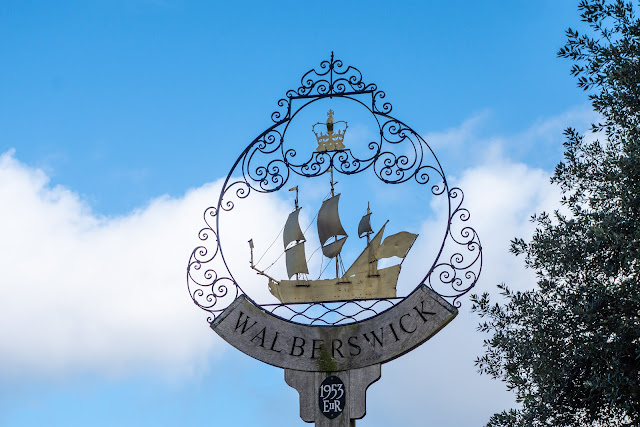More ghosts - Walberswick
The Suffolk village of Walberswick has a long history as a busy port and centre for maritime trade. As early as the 13th century the harbour at the mouth of the River Blyth was a thriving centre for trade in bacon, timber, cheese, and corn. and with good access to offshore fishing banks the port was a thriving centre for the fishing trade as well.
For many years Walberswick languished in the shadow of Dunwich, 3 miles to the south, but coastal erosion and silting meant that the port at Dunwich lost its importance by the late 13th century, and as Dunwich faded into obscurity Walberswick began to flourish.
The villagers grew wealthy on the trade passing through the port, and built an imposing church, dedicated to St Andrew, to rival the nearby churches at Southwold and Blythburgh.
Unfortunately, silting of the harbour and the effects of erosion along the coast meant that the heady days of Walberswick's trade were numbered. By the late 17th century the villagers could no longer maintain their large church. They were forced to pull it down, sell the lead and three of their four bells to raise enough money to erect a small church that fit inside the old medieval south aisle. You can still explore the ruins of the medieval church, well inland of the port on the road to Blythburgh.
First thing to note (as I like village signs) is the sign with the ship on it. A reminder of the past history which made it wealthy.
This is the 17th century church of St Andrew
...... sitting among the ruins of the older, grander Church.
The inside of St Andrews, simpler than, I suspect, the older one was. Courtesy of the puritan 17th century's suspicion of maintaining church buildings in their former glory
On the beach, near the harbour entrance, the waves roll in still, as they have since time immemorial.
The beach lined with sand dunes ...
...and the odd hat!!
Keith ‘Wally’ Webb helped fund this bridge to the beach to enable sea defence work to take place. As a tribute to his many local works, his name was inscribed on it.
‘Wally’ Webb, was also co-Founder (with his brother) of the crabbing competition which ran each year from 1981 to 2010, raising tens of thousands for charities including the old Blythburgh Hospital and East Anglia’s Children’s Hospices’ Treehouse Appeal - Seen on a plaque near the beach.
It seems a shame that nearly 50% of the home in the village are now holiday lets, but that seems a trend for many seaside town on this coast. However, it is a beautiful place to visit, and has attracted many well known names such as Philip Wilson Steer and his circle of English Impressionist, as it did Charles Rennie Mackintosh.













Comments